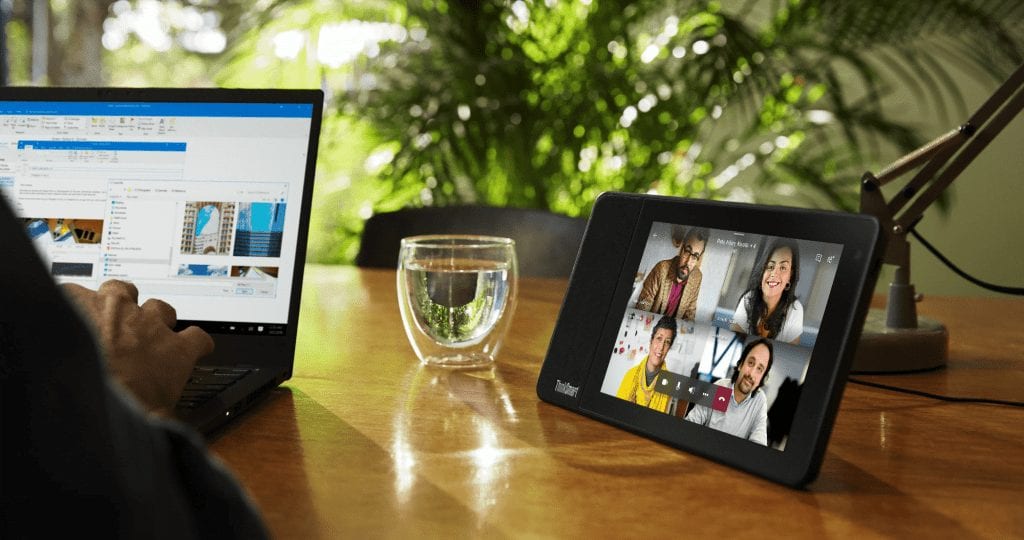Last year, CIOs were unexpectedly put in the spotlight to accelerate their companies’ digital transformation journeys in the face of unprecedented workforce health concerns, facility access limitations and a global recession. These conditions persist into 2021 and require us to think beyond keeping the lights on toward the future of business in the new normal. Employee productivity and morale highly depend upon effective remote collaboration tools, resulting in an increased demand for improved IT infrastructure needed to run efficient operations. Those operations now more than ever require new levels of data analytics, artificial intelligence solutions, and process automation to improve profitability and reposition companies for growth.
As businesses continue to consider their desired future state and explore new ways to drive growth, I see three prevailing themes and mega-trends CIOs and IT leaders should be thinking about: Remote Hybrid Workforce, Home as a Platform and Business Model Evolution.
Remote Hybrid Workforce
The pandemic continues to reshape when, where and how employees perform their work. As businesses across the globe continue to be challenged with varying restrictions and guidelines, companies are planning a new combination of how to ‘get the job done’ by implementing a hybrid workforce model, where some employees are on-site while others work virtually from home.
According to Gartner research, 94% of organizations are allowing for more flexibility in where and when employees work as they return to the workplace.

Many leaders have begun asking – How do we maintain productivity? How do we maintain our company’s culture if our employees feel divided or disconnected? What implications does this reality have on our talent recruitment and work site strategies?
The idea of a hybrid workforce model is that smart, connected workspaces will evolve into a seamless employee experience focused on digital dexterity, employee well-being and retention, greater access to talent, time zone and work hour flexibility, and overall improved productivity.
Businesses will have the ability to treat all employees, no matter the location, as equal participants in the collaboration and culture of their organizations. Technology and IT infrastructure enhancements and changes will enable an improved employee experience and overall effectiveness of the remote hybrid workforce. Examples include replacing traditional VPN access to on-premise services with enterprise-wide single sign-on passwords that give access to an integrated hybrid cloud of on-premise and cloud-based services. These solutions and others will improve access to data and analytics tools needed to help leaders make better operational decision-making remotely.
Home as a Platform
How we interact with other people and businesses changed overnight when the pandemic hit. From telemedicine appointments, shopping, food delivery, working, learning, entertainment, to connecting with family and friends – nearly everything can be done from home with continual improvements in quality and richness.
At Lenovo, we consider ‘Home as a Platform’ to be personalized digital services that enable daily work, education, socialization and well-being activities. Every household member will have access to shared and personal services through any device. One PC per home has quickly been morphing into one PC per person. Broadband access, bandwidth, service quality, and mobility have never been more important. And all of this requires a robust IT infrastructure to make it a reality.
Remote learning, work, healthcare, and entertainment at home are here to stay. This requires innovation, planning, and IT infrastructure solutions to deliver superb user experiences at scale. CIOs should consider their companies’ place in this ‘Home as a Platform’ ecosystem and what technology and business opportunities it presents. A few examples include upgrading devices and infrastructure to support their remote workforce, new ways of reaching customers digitally at a geographical scale not before feasible in-person, and new services that will appeal to consumers at home.
Business Model Evolution
One of the key lessons coming from the pandemic is the need for businesses and organizations to be agile and resilient. To survive unpredictable and volatile events such as COVID-19, global trade regulations, supply chain disruptions, and natural disasters, business leaders must be prepared to make decisions efficiently and quickly. Their teams and systems must be able to absorb stress, adopt growth mindsets, recover critical functionality quickly, and thrive in altered circumstances. Building a resilient team and supporting business models that embrace change is the strategic opportunity that will separate the future industry leaders from those of the past.

Leaders need to think not only about how they reach their customers but how their products and services are consumed and monetized. Customers increasingly expect products and services to be available on demand with pay-as-you-go consumption-based billing models. This extends to software and hardware infrastructure just as it does for ridesharing.
Businesses will continue to need to offer multiple forms of online and touchless payment processing. They will need to consider the frequency and scale at which their products can be delivered virtually in people’s homes and how that may open the door for new growth opportunities. The technologies and IT architecture will need to be upgraded to enable the desired end-state and build in agility to adapt to changing needs.
How technology is enabling these trends
The rapid change in how we interact with technology caused by the pandemic has not necessarily led to revolutionary new inventions or a dramatically different agenda for CIOs. In fact, many of the technologies on IT roadmaps were already in the development or deployment process, and many organizations are accelerating those plans at record speed.
Many businesses have been building their hybrid cloud architectures and leveraging advanced data analytics, high-performance computing, and/or artificial intelligence to solve complex problems for some time now. Communications service providers have been virtualizing their networks to run on standard, high-volume server platforms – and rolling out 3G, then 4G and now 5G for faster connectivity and seamless mobile experiences. Hear more from our Lenovo Tech World 2020 about the impact 5G is expected to make. Companies and schools are continuously improving their collaboration tools. More recently, edge computing has put intelligence and data processing out in the field to automate mundane tasks and enable new AI usages at a scale that is not possible with humans. All these technologies continue to be essential to prepare for today and the future. These are not new technologies and needs, however, what is new, is the pace at which they are being adopted and how fast human behavior is adapting to depend on these technologies.
The following chart illustrates how some of these key technologies map to the three megatrends described earlier.

What’s next?
As businesses continue to operate and evolve in this new normal, I highly encourage all CIOs and IT decision makers to consider the implications and opportunities within these three mega-trends for their businesses. Be prepared with a strategic agenda and the willingness to (re)prioritize where necessary and have a growth mindset on how to get there.
Learn more about Lenovo’s mission to bring Smarter Technology for All.
